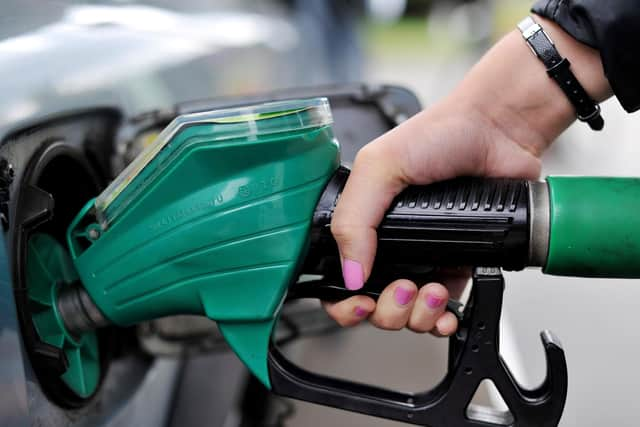Cost of living: Inflation eases from 40-year high but food prices continue to soar
The Office for National Statistics (ONS) said Consumer Prices Index inflation reached 9.9% in the year to August, down from 10.1% the previous month – a 40-year high.
Experts had expected the figure to be unchanged between the two months.
Advertisement
Hide AdAdvertisement
Hide AdThe ONS said the biggest downward pressure on the inflation rate was the price of motor fuels, which has been falling in recent months.


The 6.8% drop in fuel prices was the highest since between March and April 2020, the early days of the pandemic when oil prices briefly went negative on some markets.
But food prices are continuing to rise, by 13.1% in the 12 months to August, the highest rate for exactly 14 years.
And while it eased slightly last month, UK inflation is still the highest among all G7 countries.
Inflation figures are unlikely to have peaked yet either, rises are expected again later this year. In October energy bills will spike from £1,971 to £2,500 for the average household.
The Government’s support for households will help somewhat, taking bills down from £3,549.
The National Institute of Economic and Social Research forecast that inflation will peak at around 11.5% in the first quarter of next year, and come back down to around 2% towards the end of 2024.
George Lagarias, chief economist at accountancy Mazars, warned: "It will be some time before inflation truly starts dropping off.
Advertisement
Hide AdAdvertisement
Hide Ad“Higher energy prices for all the previous months have fully fed into most supply chains and it will take months of lower oil for end-consumer prices to meaningfully come down again. Inflation may well remain a central theme until at least the end of the year.”
The figures mark a positive trend for the first time in more than a year. Inflation has risen every month since September 2021, according to the official figures.
But despite a positive headline trend, inside the data there are more worrying details, according to analysis from the Resolution Foundation.
The think tank said the poorest 10th of households are facing an average inflation rate of 10.6%, compared with 9% for the richest.
“High inflation is set to be with us for some time, particularly for low-income households who continue to be hit hardest by high prices,” said senior economist Jack Leslie.
“Having delivered £2,200 worth of cost-of-living support for every household this year, the Government will need to consider what support will be needed next year too.”
Inflation has piled pressure on households around the country, whose cost of living has rocketed, largely as a result of soaring energy costs.
No part of the economy has escaped the energy crisis, which has helped push up prices of food and other items.
Advertisement
Hide AdAdvertisement
Hide AdExperts believe that the support on energy bills announced by the Government last week will ensure that inflation does not reach the concerning highs that had been forecast.
Vills will be capped at £2,500 per year for the average household for the next two years, new Prime Minister Liz Truss announced on Thursday.
Without that support bills had at most been forecast to rise to £7,700 for the average family.
Comments
Want to join the conversation? Please or to comment on this article.